Related Research Articles

Dame Flora McKenzie Robson was a British actress and star of the theatrical stage and cinema, particularly renowned for her performances in plays demanding dramatic and emotional intensity. Her range extended from queens to murderesses.

Anthony Asquith was an English film director. He collaborated successfully with playwright Terence Rattigan on The Winslow Boy (1948) and The Browning Version (1951), among other adaptations. His other notable films include Pygmalion (1938), French Without Tears (1940), The Way to the Stars (1945) and a 1952 adaptation of Oscar Wilde's The Importance of Being Earnest.

42nd Street is a 1933 American pre-Code musical film directed by Lloyd Bacon, with songs by Harry Warren (music) and Al Dubin (lyrics). The film's numbers were staged and choreographed by Busby Berkeley. It starred an ensemble cast of Warner Baxter, Bebe Daniels, George Brent, Ruby Keeler, Dick Powell, and Ginger Rogers.

Lady Cynthia Mary Evelyn Asquith was an English writer and socialite, known for her ghost stories and diaries. She also wrote novels, edited a number of anthologies, wrote for children and covered the British Royal family.
George Thomas Moore Marriott was an English character actor best remembered for the series of films he made with Will Hay. His first appearance with Hay was in the film Dandy Dick (1935), but he was a significant supporting performer in Hay's films from 1936 to 1940, and while he starred with Hay during this period he played a character called "Harbottle" that was based on a character Marriott usually played. His character Harbottle was originally created by Hay when he used the character in his "The fourth form at St. Michael's" sketches in the 1920s.
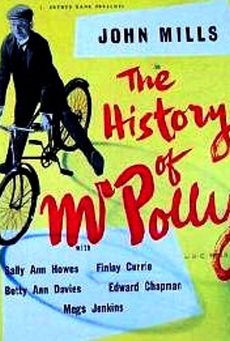
The History of Mr. Polly is a 1949 British film based on the 1910 comic novel The History of Mr. Polly by H.G. Wells. It was directed by Anthony Pelissier and stars John Mills, Betty Ann Davies, Megs Jenkins, Moore Marriott and Finlay Currie. It was the first adaptation of one of Wells's works to be produced after his death in 1946.
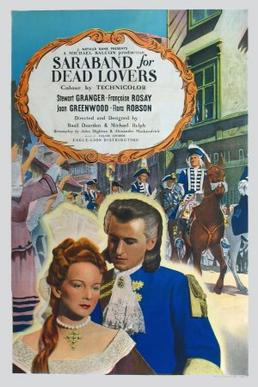
Saraband for Dead Lovers is a 1948 British adventure historical drama film directed by Basil Dearden and starring Stewart Granger and Joan Greenwood. It is based on the 1935 novel by Helen Simpson. Set in 17th-century Hanover, it depicts the doomed romance between Philip Christoph von Königsmarck and Sophia Dorothea of Celle, the wife of the elector of Hanover. The saraband mentioned in the title is a type of Spanish dance.
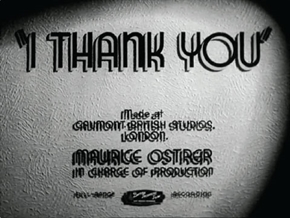
I Thank You is a 1941 black and white British comedy film directed by Marcel Varnel and starring Arthur Askey, Richard Murdoch, Graham Moffatt and Moore Marriott. It was produced by Edward Black at Gainsborough Pictures. The title of the film is the literal version of Arthur Askey's famous catch-phrase which he idiosyncratically pronounced as "Ay-thang-yaw".

The Tall Headlines is a 1952 British drama film directed by Terence Young and starring André Morell, Flora Robson, Michael Denison, Peter Burton, Sid James and Dennis Price. It was shot at Walton Studios outside London. In the United States the film was retitled The Frightened Bride. It was based on the 1950 novel of the same title by Audrey Erskine Lindop.

Tell England is a 1931 British drama film directed by Anthony Asquith and Geoffrey Barkas and starring Fay Compton, Tony Bruce and Carl Harbord. It is based on the 1922 novel Tell England by Ernest Raymond which featured two young men joining the army, and taking part in the fighting at Gallipoli. Both directors had close memories of Gallipoli, as did Fay Compton's brother, Compton Mackenzie. Asquith's father H. H. Asquith had been Prime Minister at the time of the Gallipoli Landings, a fact which drew press attention to the film, while Barkas had fought at Suvla Bay in the Gallipoli campaign.
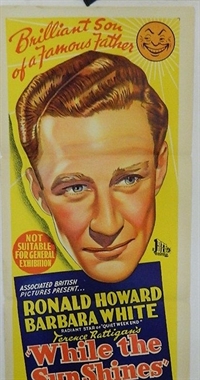
While the Sun Shines is a 1947 British comedy film directed by Anthony Asquith and starring Barbara White, Ronald Squire, Brenda Bruce, Bonar Colleano, and Michael Allan. It was based on Terence Rattigan's 1943 play of the same name.

Carnival is a 1946 British drama film about a ballet dancer of the Edwardian era, directed by Stanley Haynes and starring Sally Gray, Michael Wilding, Stanley Holloway and Jean Kent. It is based on the 1912 novel of the same name by Compton Mackenzie, which had previous been made into a 1932 film version Dance Pretty Lady by Anthony Asquith. It was shot at Denham Studios with sets designed by the art director Carmen Dillon.
The Water Gipsies is a 1932 British, low-budget "quota quickie" drama film directed by Maurice Elvey and starring Ann Todd, Sari Maritza and Ian Hunter. It is an adaptation of the 1930 novel The Water Gipsies by A.P. Herbert. The film was made at Beaconsfield Studios. Vivian Ellis worked as the film's composer, and later used some of the music in the 1955 stage musical adaptation of the novel.
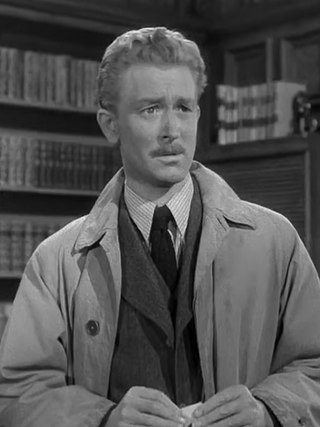
Carl Harbord was an English stage, film and television actor.

Ann Casson was an English stage and film actress. She was a daughter of acting couple Sir Lewis Casson and Dame Sybil Thorndike and had three siblings: John, Christopher and Mary. She was married to actor Douglas Campbell and had four children.

Bolibar is a 1928 British silent drama film directed by Walter Summers and starring Elissa Landi, Michael Hogan, and Carl Harbord. It was based on the 1920 novel The Marquis of Bolibar by Leo Perutz. It was made by British Instructional Films at Cricklewood Studios. Also outside scenes shot on the island of Malta with hundreds of Maltese extras.
Michael Hogan was a British screenwriter. Hogan had previously been a notable film actor, appearing in lead roles in a number of silent and early sound films. Hogan worked as a writer in both Britain and Hollywood.
Rollo Lloyd was an American actor who appeared in about 65 films. His films include Today We Live, Strictly Personal, The Lives of a Bengal Lancer, Mad Love, Magnificent Obsession, The Devil-Doll, Anthony Adverse, Seventh Heaven, Armored Car, The Last Train from Madrid, Souls at Sea and The Lady in the Morgue, among others.
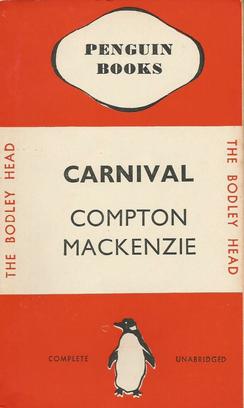
Carnival is a 1912 novel by the British writer Compton Mackenzie. A London ballet dancer falls in love with an aristocrat, but refuses to become his mistress and instead marries a Cornish farmer with ultimately tragic consequences. It was a commercial and critical success on its release.
Jack Parker was a British cinematographer and cameraman. He worked on a mixture of features and documentary films during his career. In the 1930s he worked on a number of BIP and Butcher's Film Service productions, while in the 1940s he was employed as a cameraman on Ealing Studios films.
References
- ↑ Craig Butler. "Dance Pretty Lady (1932) - Anthony Asquith - Synopsis, Characteristics, Moods, Themes and Related - AllMovie". AllMovie.
- ↑ "BFI | Film & TV Database | DANCE PRETTY LADY (1932)". Archived from the original on 12 October 2012. Retrieved 25 June 2009.